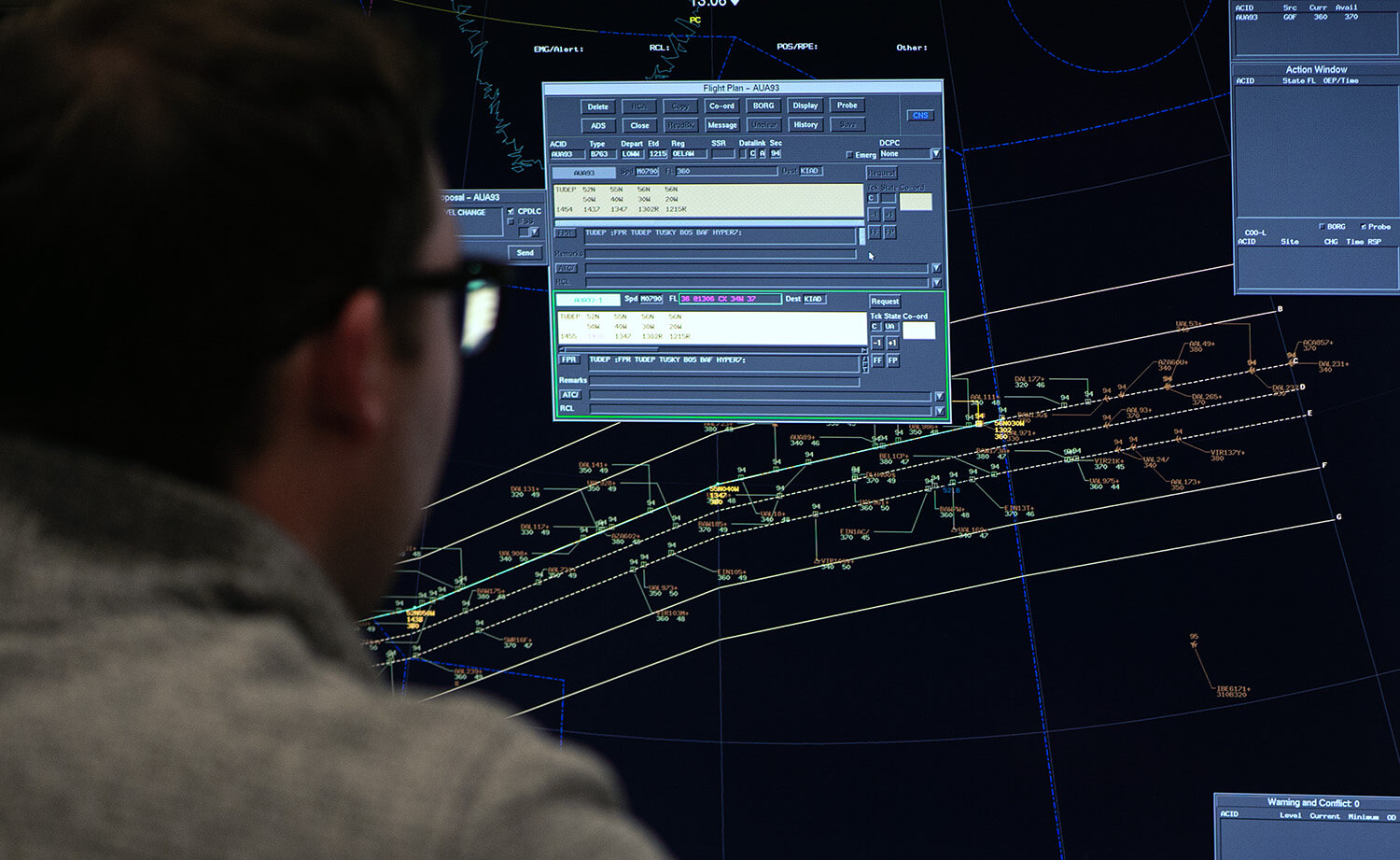







January 23, 2020
The successful collaboration of Aireon, NATS and NAV CANADA ushers in a new era of safety, predictability and efficiency within the North Atlantic, the world’s busiest oceanic airspace. With the deployment of Aireon’s space-based Automatic Dependent Surveillance Broadcast (ADS-B) system, NAV CANADA and NATS are setting the standard for implementation around the world.
The benefits of space-based surveillance
The deployment of space-based ADS-B is a game-changer within the aviation industry. The ability to discern the position, speed and altitude of every ADS-B equipped aircraft, in real time, is a transformational change to how controllers have historically managed air traffic.
Traditional ground-based surveillance covered 30 percent of the globe. Controllers relied on position updates from aircraft every 10 to 14 minutes to track aircraft outside of radar coverage. With space-based ADS-B, any equipped aircraft can be tracked anywhere on earth, all day, every day. This means travel that is safer, more predictable and more efficient as aircraft can fly routes at optimal speeds and levels.
In the North Atlantic airspace, traffic that has increased some 26 percent since 2010 and continues to grow on average 4 percent per year. Space-based ADS-B brings us a new tool to manage the increasing traffic in this busy and important airspace.
Flying over the North Atlantic
Use of space-based ADS-B over the North Atlantic began in spring 2019. The results have been impressive with the Aireon system exceeding industry standards for service provision, with clear improvements in safety performance and with more flights receiving requested flight levels, speed and routes.
“The deployment of space-based ADS-B is the beginning of a global revolution that is already showing its promise by delivering enhanced safety, efficiency and environmental benefits,” says Neil Wilson, NAV CANADA President and CEO.
Since March 2019, longitudinal standards have been reduced from 5 minutes (approximately 40 nautical miles) to 14-17 nautical miles, and lateral separation reduced from 23 nautical miles to 15-19 nautical miles for equipped aircraft in the North Atlantic airspace.

Looking ahead
Use of space-based ADS-B surveillance is expected to reduce overall safety risks by approximately 76 percent in the North Atlantic, according to a joint analysis by NAV CANADA and NATS.
And, carbon dioxide emissions are estimated to be reduced by approximately two tonnes per oceanic flight, based on a study conducted by NATS and the International Civil Aviation Organization (ICAO).
“Based on the immediate benefits we’re seeing for NATS and NAV CANADA in the North Atlantic, it is clear that space-based ADS-B is a powerful tool for innovation,” said Aireon CEO Don Thoma.
With an eye to the future, opportunities for comprehensive and continued benefits for the aviation industry as a whole are at hand. The data received from space-based ADS-B will create innovations that have not yet been imagined.